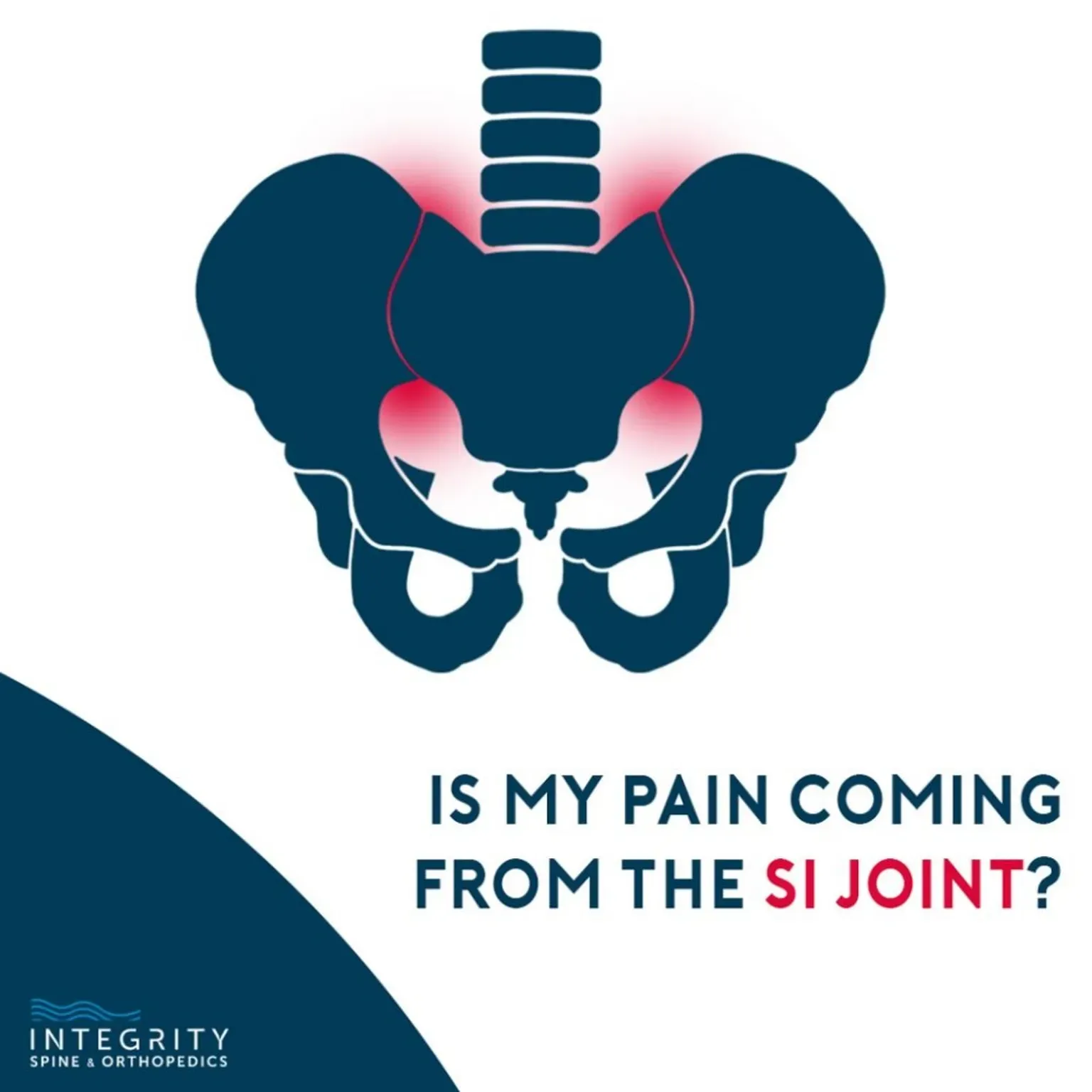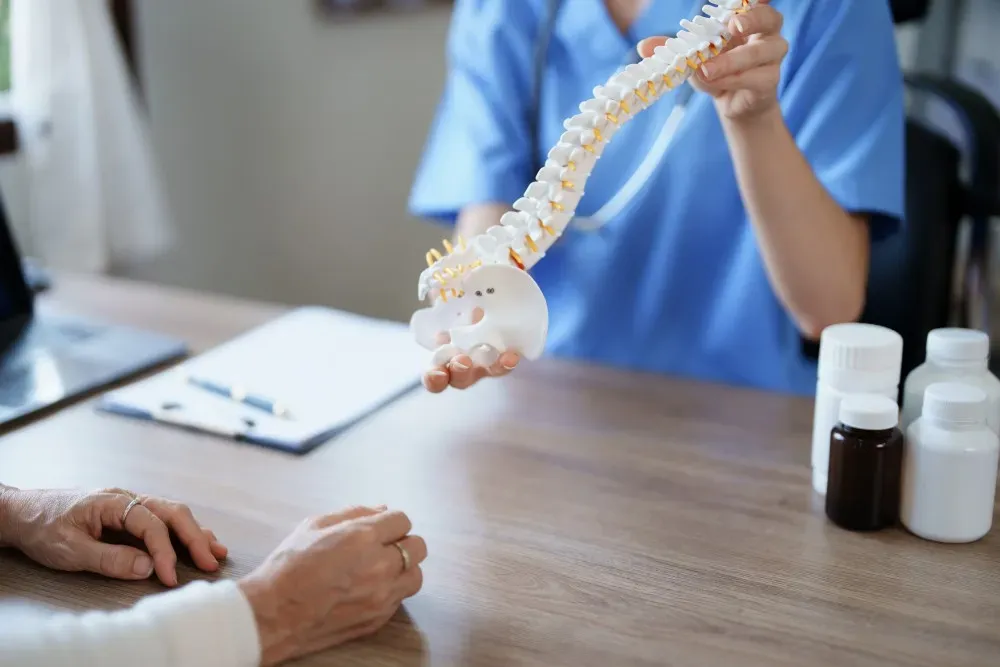Neurosurgery & Orthopedic Surgeons in Jacksonville

Is My Pain Coming From the SI Joint?
Approximately 25% of cases of low back pain are caused by sacroiliac (SI) joint pain and dysfunction. The SI joints are located deep in the body and attach the spine to the hips. When the joints become inflamed, have excessive movement, or have too little.
Approximately 25% of cases of low back pain are caused by sacroiliac (SI) joint pain and dysfunction. The SI joints are located deep in the body and attach the spine to the hips. When the joints become inflamed, have excessive movement, or have too little movement, back pain and other symptoms occur.
Back pain is a leading disability in the United States and a common reason for missed work, missed school and doctor’s appointments. Keep reading to learn more about the symptoms of SI joint pain and dysfunction.
WHAT ARE THE SACROILIAC JOINTS?
You have two sacroiliac joints, one on each side of the body. The SI joints connect the sacrum (the bone at the bottom of the spine) to the ilium (one of three hip bones). They absorb shock during movement, support and stabilize the spine, and distribute weight evenly across the pelvis.
Healthy SI joints are supported by a web of ligaments and muscles and move very little. Traumatic injuries, repetitive stress, arthritis, pregnancy, hip or spine surgery, and abnormal body mechanics can cause the supporting ligaments to become too loose, too tight or inflamed, resulting in abnormal joint movement, pain and dysfunction.
7 WARNING SIGNS OF SI JOINT DYSFUNCTION
SI joint pain typically only affects one side of the body. The following symptoms are common.
- Low back pain. Low back pain is a common symptom of SI joint pain. The pain might feel dull and achy, or sharp and stabbing.
- Pain that spreads. SI joint pain frequently spreads to the hip bone, pelvis, buttock, groin, and upper thigh on the affected side. In most cases, SI joint pain doesn’t extend past the knee.
- Stiffness. SI joint dysfunction can cause stiffness, tightness and tension in the low back, hips and pelvis. You may experience reduced range of motion during back and hip movements.
- Increased pain with pressure. SI joint pain typically worsens when pressure is applied to the affected side from sitting, standing or walking for long periods. You might experience more pain at night from lying on the sore, achy joint.
- Increased pain with transitions. Pain frequently worsens with transitional movements like sitting to standing, running/jogging, or climbing stairs.
- Instability. When the SI joint is dysfunctional, you may feel like your back or leg is going to buckle and give out during movement.
- Weakness, numbness or tingling. In some cases, a SI joint problem causes weakness, numbness or tingling in the back, buttock, hip, groin or leg.
DIAGNOSIS AND TREATMENT
Diagnosing SI joint problems can be challenging because the symptoms mimic those of several back conditions. Your doctor will take a medical history, conduct a physical exam, and ask you to perform certain exercises that indicate a SI joint problem. He or she will also take imaging studies to rule out other possible causes of pain.
Additionally, your doctor may administer a diagnostic injection. He or she will inject an anesthetic and corticosteroid solution into the affected joint. If you experience pain relief, that’s a good indicator the SI joint is the problem.
Many cases of SI joint pain resolve with non-surgical care. Taking a few days to rest, ice and heat the affected joint can help relieve pain and symptoms. Additionally, your doctor might prescribe:
- Medications. Over-the-counter anti-inflammatories help relieve mild to moderate pain and inflammation. If you’re in significant pain and discomfort, your doctor might prescribe a short-term course of muscle relaxants or stronger painkillers.
- Injections. A corticosteroid injection reduces inflammation around the affected joint, relieving pain and symptoms. A nerve block numbs the affected nerve root and prevents pain signals from reaching the brain. Both types of injections provide only temporary pain relief and are not a permanent treatment solution.
- Radiofrequency ablation. If a nerve block is effective, you may be a good candidate for radiofrequency ablation (RFA). The RFA procedure uses heat to damage or destroy nerve tissue, preventing the nerve from sending pain signals to the brain. The RFA procedure is very safe and can be repeated if the nerve tissue grows back.
- Physical therapy. Physical therapy can help you strengthen the low back and pelvis, improve range of motion and increase flexibility.
- Bracing. If you’re experiencing a lot of instability, your doctor may recommend a pelvic brace to help support and stabilize the SI joint during movement.
- Chiropractic care. Chiropractic manipulation can help stretch the affected area, reduce muscle tension and restore proper alignment.
If non-surgical treatments aren’t providing effective relief, you may be a candidate for surgery.
WHEN IS SURGERY REQUIRED?
Surgery is the final treatment option for chronic SI joint pain that doesn’t respond to conservative treatments. A fusion surgery is the standard choice for SI joint dysfunction. During the procedure, the ilium and sacrum bones are fused together, eliminating painful movement at the joint. The goal of surgery is to reduce pain and stabilize the low back and pelvis.
Integrity Spine and Orthopedics performs minimally invasive SI joint fusion surgery in our outpatient ambulatory surgery center (ASC). Minimally invasive spine procedures require smaller incisions, cause less soft tissue damage, and lead to less post-op pain. After surgery, our patients can return home the same day. Using less invasive techniques facilitates faster rehabilitation and recovery, and many of our patients return to work and their normal activities within a few weeks after the procedure.
CALL INTEGRITY SPINE AND ORTHOPEDICS FOR SI JOINT PAIN TREATMENT
Don’t let pain disrupt your life for too long. Whether you’re suffering from an acute injury or chronic pain, Integrity Spine and Orthopedics has the orthopedic care, pain management, sports medicine, and minimally invasive surgery services to help you to get back on your feet and back to doing the activities you love.
We have a convenient clinic located in Jacksonville, FL. Please call us or fill out a form to request your first appointment.




